Workload Paralysis: What Is It and How To Manage It to Stay Productive

Sorry, there were no results found for “”
Sorry, there were no results found for “”
Sorry, there were no results found for “”
Do you have a ton of work to do, but you nevertheless keep putting it off? Is your backlog piling as you struggle to understand where and how to begin, giving you even more headaches with each passing day? 🤯
If you answered affirmatively to any of these questions, you may be falling prey to workload paralysis—a nightmare for many working professionals and team leaders.
What exactly is workload paralysis, and can it be effectively managed for improved mental health? Take a deep breath and stay with us as we explore the causes and effects of this common predicament and share a few simple tips for overcoming mental blocks.
Workload paralysis is often equated with procrastination. However, it’s not like your regular procrastination, where you simply lack the motivation to work and instead put off your responsibilities endlessly. It’s procrastination combined with feeling overwhelmed, mainly because of the amount of work on your plate and the feeling that it’s too much for you to handle. 🍽️
In the throes of workload paralysis, you struggle to decide which task to tackle first to start clearing your backlog. Consequently, the backlog keeps growing, further paralyzing you and holding you back from taking action, even when faced with tight deadlines.
As we’ve seen, work paralysis is a self-fulfilling cycle, a vicious loop. A stacked list of tasks and obligations is the initial culprit, which persists and sustains itself the more you get stuck, leading to a constant workload increase. 😓
There are a couple of reasons why your backlog started to pile up initially, such as:
Once your workload has accumulated beyond a manageable limit, the loop is set. From then on, the heavy workload itself becomes the source of your problem. You feel stuck (even stressed out and freaked out in extreme cases), so you procrastinate some more, making the situation even worse.
Workload paralysis can be contagious. If you’re going through it, it will eventually affect your team members (especially if their work depends on yours). The situation can lead to several harmful effects, namely:
Needless to say, all these consequences can eventually spill over from professional to personal life, affecting your and your team’s overall health and well-being.
All the approaches you can adopt to prevent and overcome workload paralysis revolve around getting things done. It surely sounds easier said than done to the people struggling with this condition, but we’ll offer five practical techniques you can start implementing in your routine immediately. We’ll also introduce ClickUp—a fantastic productivity platform designed to help you conquer your workload! 💪
There are various apps that help you stay in control of your workload. They allow you to organize tasks and track project progress with the help of calendars, to-do lists, daily planners, and much more.
While many apps provide some of these functionalities, only a select few offer the full package, and ClickUp stands out as a notable example. It’s a free project management and productivity software whose powerful task management features empower you to control your workload instead of letting it paralyze you.
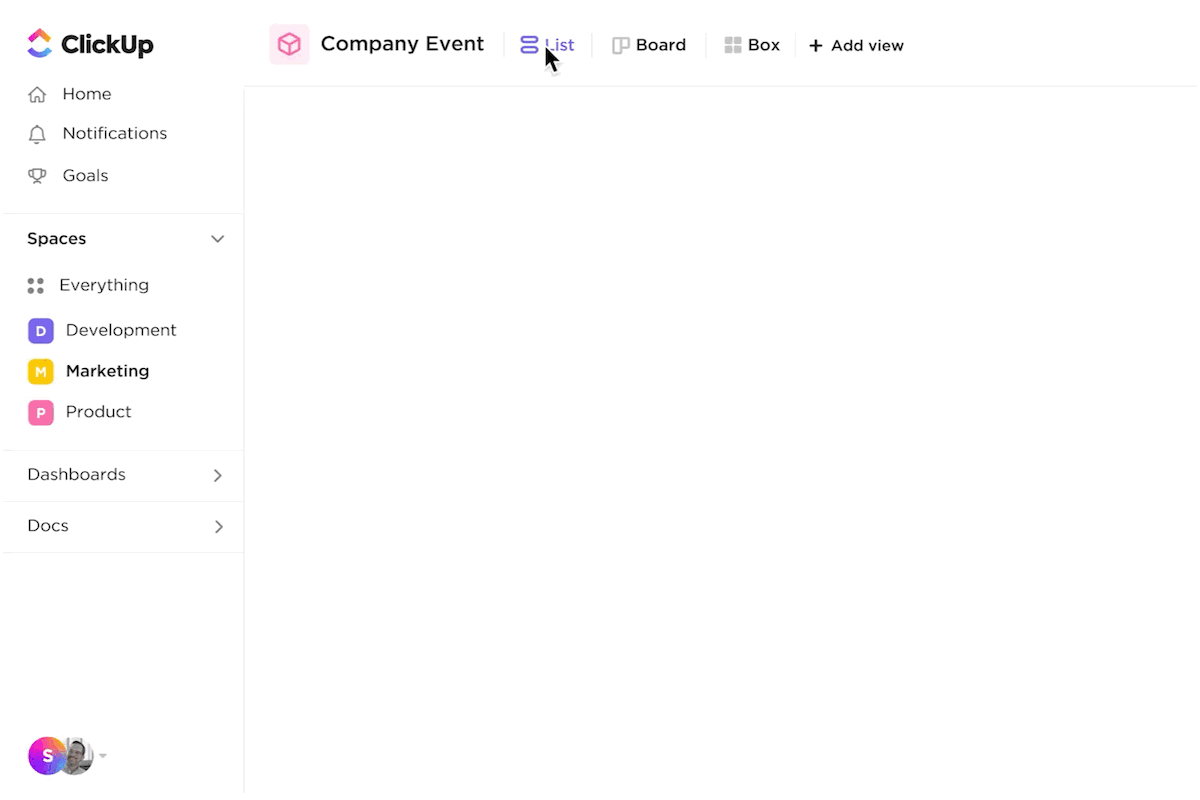
Start by adding all your tasks to ClickUp and building your own Workspace with a clear overview of your entire workload. You can set due dates, priorities, and urgency levels for your tasks so you always know what should be done immediately and what can be set aside for later. Attach to-do lists and checklists, set reminders, and track time to stay on top of your responsibilities.
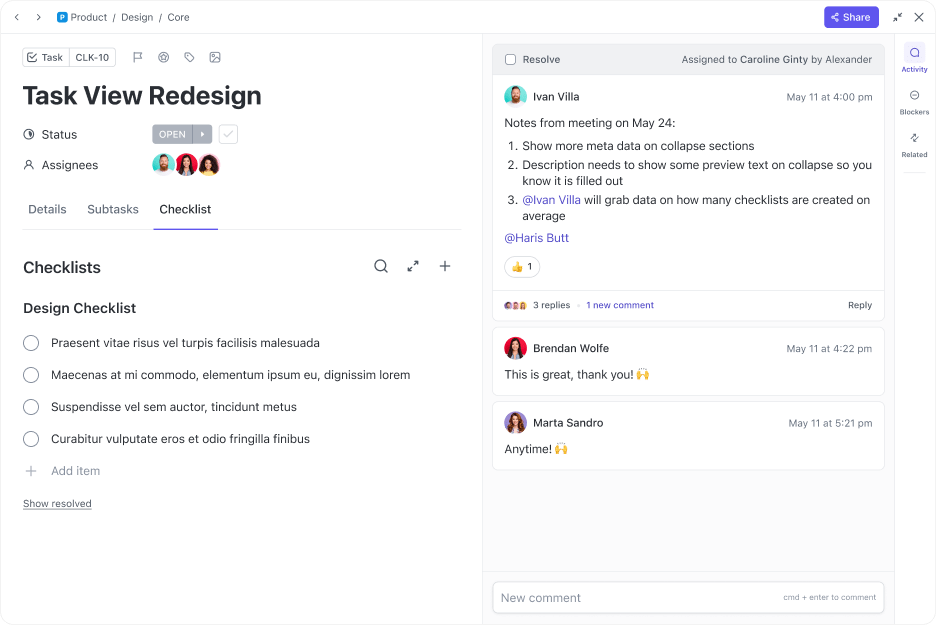
Free up time for more valuable activities and shorten your to-do lists with ClickUp AI, the platform’s AI-writing assistant. Lastly, give yourself a head start with ready-made templates for virtually any usage case. For example, its task list templates allow you to create your to-do lists faster, while time-blocking templates help you with time management for each task.
Staring at a long list of tasks can make you feel overwhelmed, but if you see them plotted on a calendar, you can understand how they are spread throughout the week or month, giving you a much more relaxed feeling.
On top of that, tasks disappearing from the calendar as you complete them can give you a greater sense of accomplishment, making you believe that you’re owning your workload (a belief crucial for overcoming workload paralysis).
ClickUp 15+ views include not only the Calendar view but various other outlines that let you visualize your work, your way. For example, the Workload view shows your capacity over a specific time, allowing you to plan better.
If you have a team, you can visualize not only your but also your team’s workload, making better workload planning possible for your entire team.
Gantt chart and Timeline views are also convenient for managing your time and resources, prioritizing or rescheduling work, and visualizing progress to empower you to keep going and climb out of the workload paralysis hole.
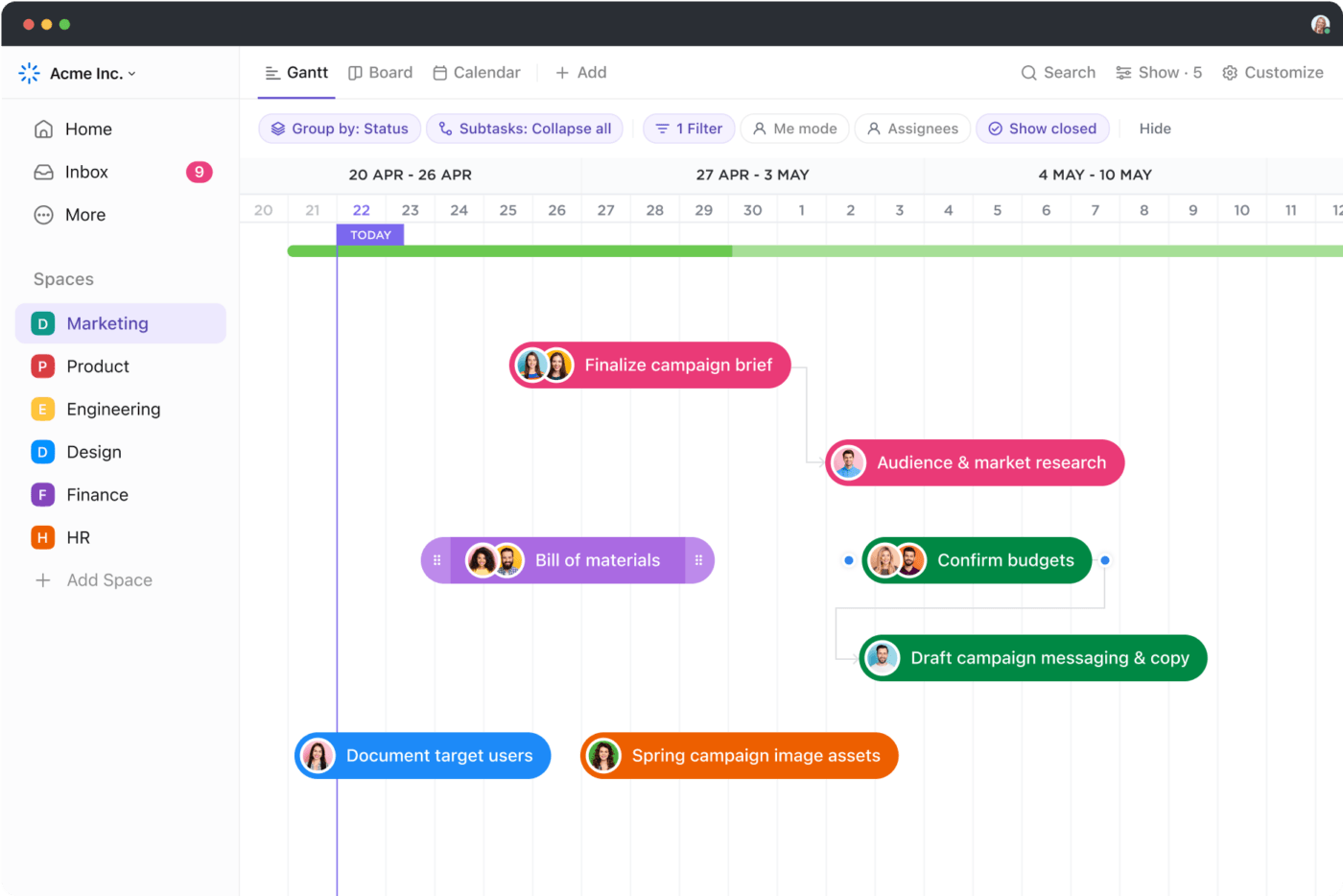
Prioritization gives you clarity on what is urgent, what can wait, and what can be delegated. By providing structure to your task list, you can reduce the overwhelm and motivate yourself to take action.
Once you have imported all your tasks into ClickUp, it’s time to start prioritizing them. Here are two approaches you can use:
| Prioritization based on urgency | Prioritization based on importance (i.e., revenue potential/value creation) |
| Tasks with due dates in the near future go to the top of your to-do list | Tasks that could generate the largest revenue should top your to-do list |
| Tasks with more relaxed deadlines go in the middle | Tasks with lesser revenue potential go below high-revenue tasks |
| Tasks with no set deadlines go to the bottom | Tasks with the least potential impact on revenue/bottom line go to the bottom |
Alternatively, if you’re facing tasks with nearly equal urgency or importance, you can prioritize them based on the time or effort required to complete them. Putting the most manageable tasks on top and completing them quickly can give you a much-needed sense of achievement, thus motivating you to check the other tasks off your to-do list as well.
Color-coding and tagging is another handy technique to easily recognize which tasks require your attention immediately. Once you’ve assigned priority levels to your tasks, it’s just a matter of sorting them based on priority levels to get your to-do list sorted in a jiff (thank us later for these productivity hacks). 😉

ClickUp’s built-in prioritization tools allow you to add one of the four priority levels to each task:
And if you want to sort them based on how much time they’ll take, you can simply add a time estimate to your tasks and use this data as the sorting criteria.
Finally, each task can also be assigned a date so you can schedule the tasks that don’t need urgent attention. Scheduled tasks appear on both the Calendar and Task views (which displays a list of tasks). Just make sure you schedule them at a time that gives you enough room to complete them before the deadline. ⌚

Gigantic tasks that take forever to be completed are true enablers of overwhelm and workload paralysis. They sit on your to-do list for weeks, frustrate you, and lead to procrastination. To avoid such scenarios, break large tasks into multiple subtasks.
ClickUp allows you to do that easily by creating multiple subtasks within a task. You can attach documents and media files to each task/subtask and add descriptions to have all the information easily accessible.
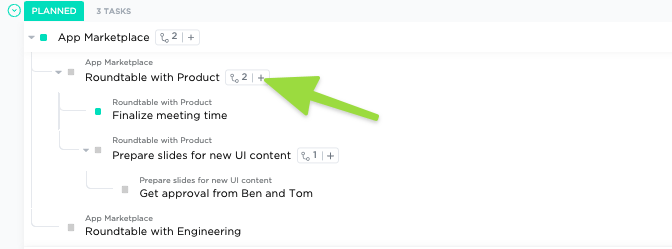
To save some precious time, you can also create recurring tasks that reappear on your task list automatically after specified intervals. Or, if they are repetitive tasks, you can automate them using ClickUp Automations, which allows you to set a trigger event and an action that takes place after it.
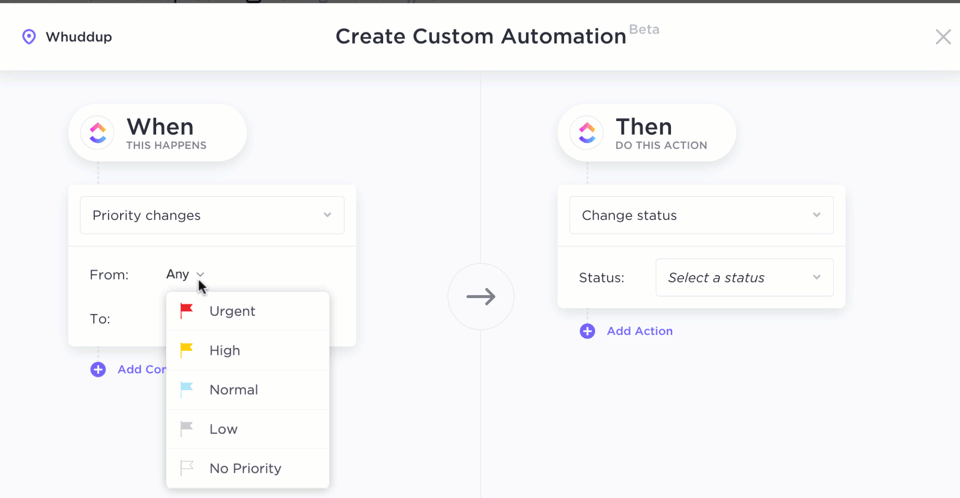
Not having clearly defined goals feeds your procrastination because you don’t quite understand what you are working toward or trying to achieve. So, you should set specific, measurable, achievable, relevant, and time-bound (SMART) goals. They will keep you on track and help instill a sense of urgency, which in turn leads to discipline. 🙂
Using ClickUp Goals, you can link each goal in any of your projects to individual project tasks. Once you complete a task, the goal progress will automatically update. The overall progress can be tracked from a Dashboard, and you can create any type of goal, including task targets, number targets, financial targets, true/false targets, and so on.

Moreover, ClickUp Reminders ensure that pending tasks don’t slip your attention, keeping you aware of your obligations even when your workload gets overwhelming.
While workload paralysis can be a significant roadblock on your journey to productivity, you can manage it with the help of a powerful productivity platform like ClickUp. It empowers you to take control of not only your workload but also the workload of your team members, helping you ensure that all your projects are on track.
So give ClickUp a try and keep all the overwhelm and procrastination at bay. Break free and get your creative juices flowing again—getting started is free! 🆓
© 2025 ClickUp